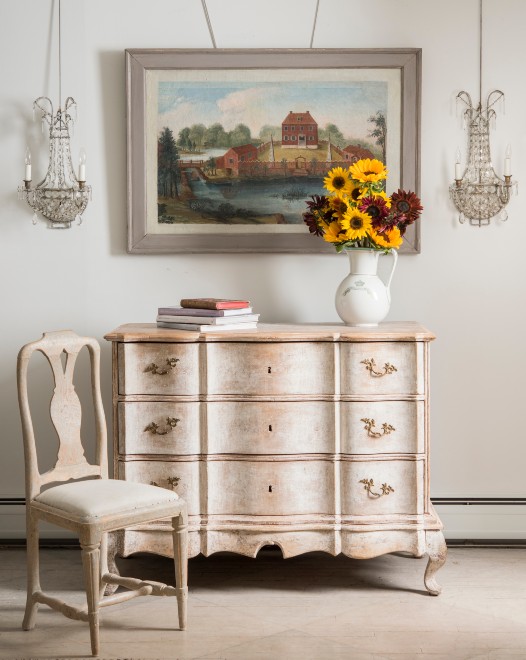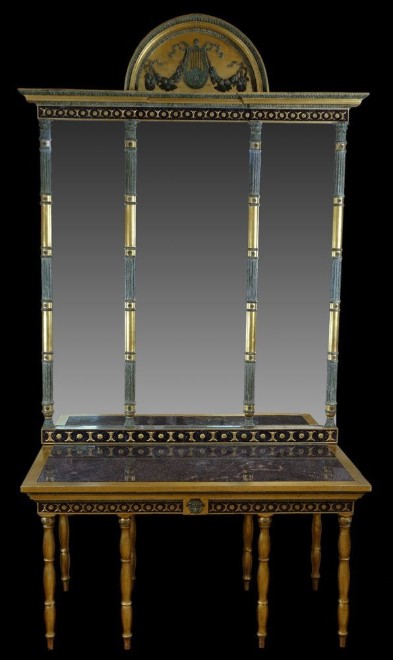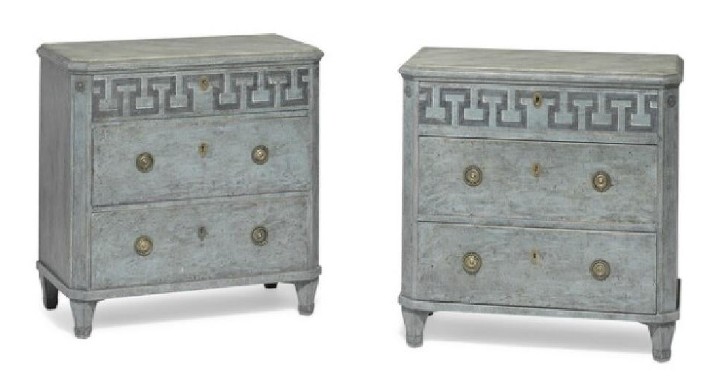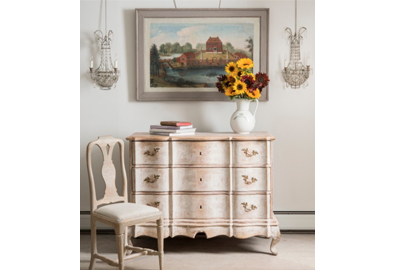
NEW YORK – Swedish furniture is in a class of its own. From the exuberant decoration of the Rococo style with an abundance of curves and natural motifs that gave way in the late 1700s to the restrained Gustavian style, Swedish furniture appeals to many. Owing to its clean lines and simplicity, it mixes well with other styles, both traditional and modern.
“You cannot talk about Swedish design without first considering the natural environment of Sweden. It is a country of islands, with the sea on one side and the interior populated by dense forests,” said antique dealer Paulette Peden of Dawn Hill Antiques in New Preston, Conn. “In the winter months there is a very short period of daylight, so the Swedish people craved the light, and created rooms painted with pale colors, and light furniture to make the most of the precious daylight.” The Gustavian style was named for Sweden’s King Gustav III (1746-92), during whose reign the talented craftsmen of the Stockholm Guild made well-designed furniture like chairs, tables, secretaries, cupboards and settees.

Swedish design is both lighthearted and airy, and this aesthetic is seen in both the design of the rooms and the furniture as well, Peden said. Interior design would capitalize on this relationship with nature and a Gustavian interior is the essence of cool classicism focusing on balance, symmetry and uncomplicated lines. “It is a functional style where everything has a purpose and nothing is overdone or fussy,” Peden said. “Tables and chairs were often placed against the walls and brought out when there was a dinner party and returned once again for dancing. When one enters a room, the pale walls and light painted classic furniture create a sense of calm and well-being.”
Light pale hues are hallmarks of the Gustavian style, and blue and gray are popular colors. Serious collectors seek out pieces in original paint, which can be hard to find as pieces were often repainted over the years.

“The Gustavian style was a reaction to the frivolity of the Rococo period. It was pared down, cool and quiet, but with elegant proportions and classical reference,” Peden said. “This style continues to be very popular today. The color palette is pale with varying shades of grey, white and very pale blue. The fabrics are simple stripes or checks, much plainer, not like the brocades and florals of previous eras. This beautiful simply elegant furniture works as well in today’s rooms as it did in the late 18th century.”
Despite the proliferation of Gustavian pieces, which has somewhat overshadowed the Rococo style, Peden stressed that the Rococo style was equally exciting. “Rococo furniture is fabulous too in its own right because of the colors, they are often pale blue or wonderful green, the curvy legs,” she said. “They are like pieces of sculpture on their own.”

The Mora clock is perhaps one of the most iconic and identifiable elements of Swedish style and is often the first addition to a collection of Swedish antiques, Peden says. “The Mora clocks were made in a wide variety of shapes – all based around the figure eight or rounded female form,” she said. Some retain a Rococo feel and are chunkier and taller while Gustavian ones are more elegant and lighter in proportion. “Clocks made in the north of Sweden were very thin and tall while others from the south had fatter tummies and exaggerated curves. The variations in shapes and sizes, makes these clocks endlessly unique and appealing.”
Interior designer Loi Thai is especially drawn to the Swedish aesthetic and has penned several blogs on Swedish furniture. In one blog focusing on the Swedish daybed, the designer talked about how versatile this piece is. Essentially a long and wide bench with raised ends (as opposed to a settee that has a backrest), it can be used to divide seating areas, placed under a large mirror in a foyer, or tucked at the foot of a bed. “The Swedish daybed is one of the most elegant pieces of furniture. Even the word daybed conjures up images of gracious lounging,” he said.

The Gustavian style was copied well into the 19th century and there are designers today who continue to make Gustavian-style furniture. The furniture has a modernity about it that makes it look equally wonderful today as it did in the 18th century and these pieces work well in many situations and different decor styles. “The thing about Swedish pieces, and a clock in particular … you could put a Swedish clock in almost any room with dark furniture and it would just be a bright beacon of light,” Peden said. “Gustavian furniture has a simplicity that can work in a modern setting mixed with mid-century furniture. In a more traditional room, an impressive cupboard can be a focal point and a set of Rococo chairs can add a new look to a dining table.”
# # #


